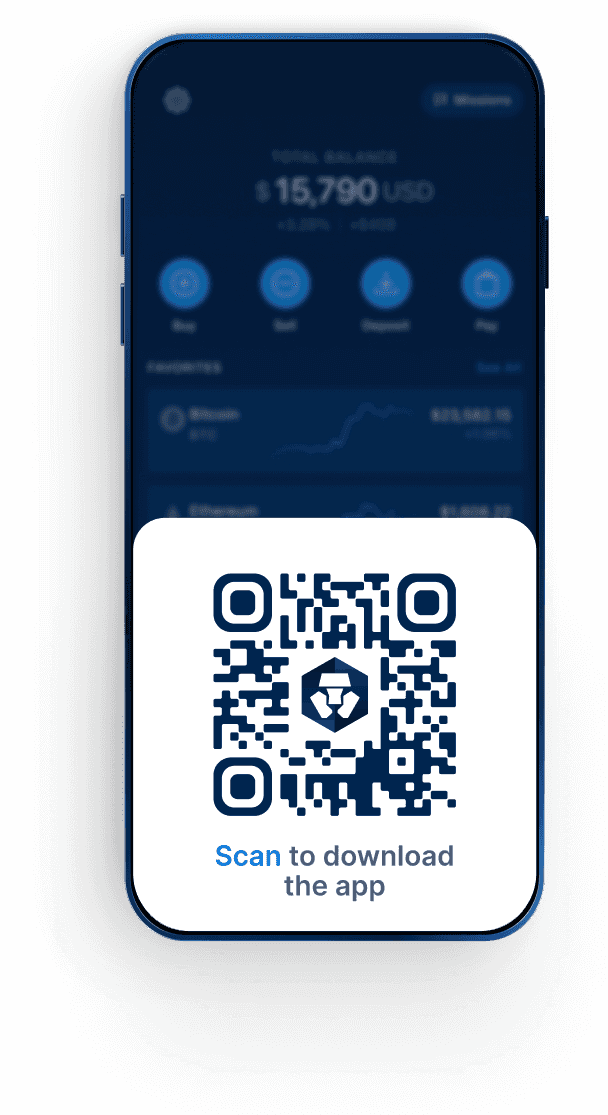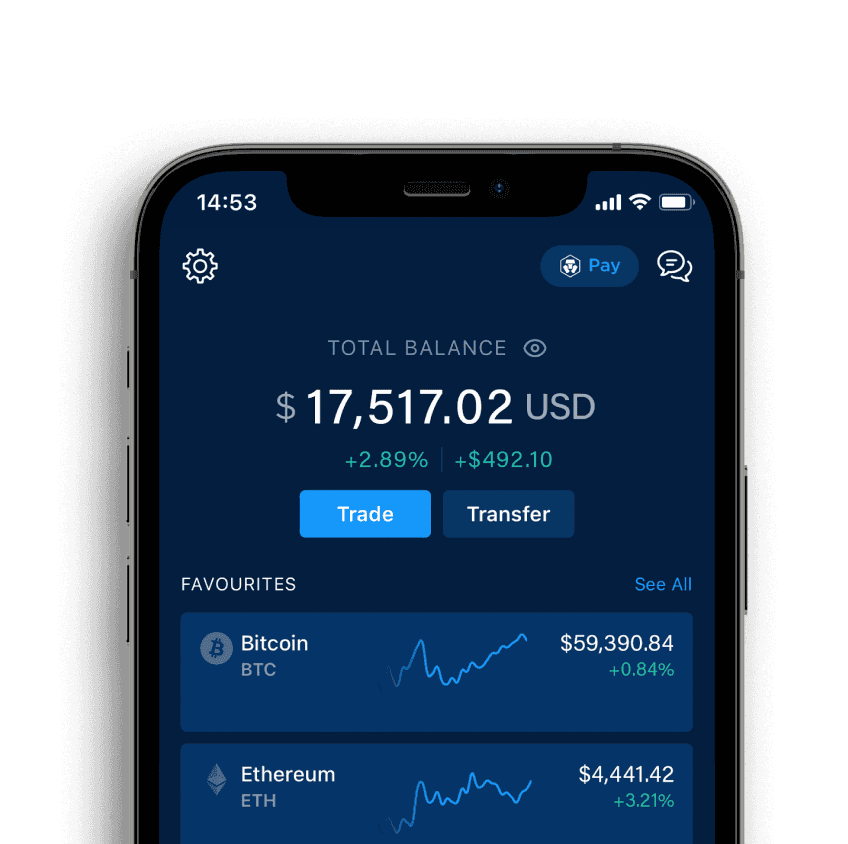
What Is Bitcoin?
Bitcoin — ‘digital gold’ — the world’s biggest cryptocurrency: Here’s your 101 guide to BTC, how it works, and how to buy and trade it.

Key Takeaways:
- Bitcoin is a peer-to-peer (P2P) digital currency system that operates independently of any central authority.
- It was launched in 2009 by an anonymous person or group known as Satoshi Nakamoto.
- Bitcoin gained popularity for several reasons, including scarcity, security, privacy, and decentralisation.
- Bitcoin uses blockchain technology to secure and verify transactions.
- BTC, Bitcoin’s native coin, can be earned through mining or purchased on an exchange.
- Freely available to anyone, Bitcoin wallets are typically used to buy, store, and send Bitcoin.
- Bitcoin’s price volatility makes it attractive to certain traders.
- An estimated 14% of all US adults own Bitcoin.
Check out Crypto.com’s new BTC to USD Converter.
Introduction
Bitcoin is a digital currency that operates independently of any central authority, such as a government or bank. It was launched in 2009 by an anonymous person or group of people using the pseudonym Satoshi Nakamoto. Bitcoin is based on a technology called blockchain, which is a decentralised ledger that records all transactions made within the network.
Bitcoin is not physical, existing solely in digital form. It is used to buy goods and services online or exchanged for other cryptocurrencies. Each Bitcoin transaction is recorded on the blockchain, making it transparent and auditable.
There are several benefits Bitcoin offers, including faster and low-cost transactions, especially for international transfers. Currently, a large part of the global population remains unbanked, with no access to financial services, as they don’t qualify for bank accounts. Bitcoin is capable of providing financial inclusivity, as anyone with an internet connection can, in principle, access and use Bitcoin, regardless of their location.
Who Created Bitcoin?
In 2008, Satoshi Nakamoto introduced the world to Bitcoin and its underlying technology: blockchain. But the true identity of Bitcoin’s creator remains a mystery to this day. While there have been speculations and proposed candidates, no concrete proof of Nakamoto’s identity has been uncovered.
Regardless of their identity, Nakamoto’s impact and legacy in the cryptocurrency world are undeniable, and Nakamoto’s identity continues to be a topic of interest and discussion within the cryptocurrency community. It is estimated that Nakamoto may possess around 1.1 million BTC, equivalent to 5% of all bitcoins to be created.
Why Was Bitcoin Created?
While Bitcoin’s creator remains anonymous, the reasons behind its creation remain speculation. However, it may have been driven by several factors, as gleaned from the white paper:
First, Bitcoin aimed to address the flaws of traditional financial (TradFi) systems based on trust, such as centralised control, high transaction fees, and limited accessibility.
Second, Bitcoin’s underlying principles include decentralisation, trustlessness, security, and privacy — all achieved through blockchain technology. By eliminating intermediaries, Bitcoin enables fast and low-cost transactions, financial inclusivity, and greater transparency.
These factors also mirror public criticism of the global financial system at the time of Bitcoin’s launch — soon after the 2007–08 global financial crisis.
Bitcoin Blockchain Technology
Bitcoin is based on a technology called blockchain, which is governed by a consensus mechanism. In simple terms, a blockchain notes down all transactions in a digital ledger, which can be publicly viewed by anyone online.
Bitcoin is not governed by one centralised institution; rather, a group of stakeholders maintain the ledger (the blockchain) together to reach agreement on which transactions are right or wrong. This is called a consensus mechanism. Bitcoin relies on the Proof of Work (PoW) consensus mechanism, the first blockchain consensus ever created.
Learn more about Proof of Work and get more details about how Bitcoin works.
How Is Bitcoin Used?
Bitcoin can be used in various ways:
First, Bitcoin can be mined, where miners solve complex mathematical problems to validate transactions and secure the network. In return, they are rewarded with new bitcoins.
Additionally, users can buy and sell Bitcoin on cryptocurrency exchanges, with the goal of taking advantage of price fluctuations to make profits.
Third, Bitcoin can also be used for online purchases and transactions, providing convenience and expanding its utility.
Moreover, some individuals hold Bitcoin, hoping its value will increase over time, allowing them to sell at a higher price. This is not guaranteed, however, as Bitcoin is a highly volatile asset; these individuals are at risk of losing part, or the entirety, of the value of their initial purchase monies.
Is Bitcoin Valuable?
Bitcoin is valued by members of the cryptocurrency community for several reasons. First, it is a decentralised currency, meaning its issuance is not controlled by any government or central authority.
Second, Bitcoin has a limited supply, with only 21 million coins ever to be mined. This scarcity is often compared to gold by the cryptocurrency community and makes Bitcoin an attractive asset for some. Unsurprisingly, Bitcoin has been dubbed ‘digital gold’.
Third, Bitcoin operates on a secure and transparent technology called blockchain. This ensures that transactions are recorded and verified by a network of computers, making it virtually impossible to alter or counterfeit transactions.
Some consider that these factors have combined to make Bitcoin a valuable and increasingly sought-after digital asset.
Who Owns the Bitcoin Network?
Unlike fiat currencies, which are issued and backed by governments, no one owns the Bitcoin payment network itself; it is entirely independent of any one person or organisation (miners work together to maintain the Bitcoin network). However, people and organisations can own BTC, the native currency of the Bitcoin network, and make software to buy, store, or transfer bitcoins.
How Many People Own Bitcoin?
In 2023, the number of Bitcoin owners has continued to steadily grow. According to a Morning Consult survey, 26% of millennials and 14% of all US adults own Bitcoin. Globally, it is estimated there are 516 million crypto owners, with over 267 million Bitcoin owners. These estimates translate to an average global crypto ownership rate of 6.5% as of June 2023.
Who Owns the Most Bitcoin?
The largest holder of Bitcoin is believed to be Satoshi Nakamoto, the pseudonymous founder of Bitcoin. Nakamoto is estimated to own over one million BTC. Additionally, there are other large holders of Bitcoin, known as ‘whales’.
Learn more about who owns the most Bitcoin.
Sending and Receiving Bitcoin
While miners mine to be rewarded and receive bitcoins, their mining fulfils another important task (other than creating new bitcoins): It records Bitcoin transactions safely and immutably (i.e., they can’t be tampered with) on the Bitcoin blockchain.
Both the sender and receiver need a Bitcoin wallet to complete a Bitcoin transaction with each other. The sender transmits the amount of Bitcoin and wallet address to the network, and within a few minutes, the transaction is verified by miners, included in the next block, and considered complete. The receiver can then log in to their wallet with their private key (i.e., the password to their wallet) and confirm the receipt of the transaction.
In addition, everyone in the Bitcoin network can verify and accept the transaction as valid, as the wallet addresses are immutably recorded on the blockchain and can be viewed publicly with a block explorer.
How Has the Price of Bitcoin Changed Over Time?
Since its inception in 2009, Bitcoin has experienced significant price fluctuations, making it a highly volatile asset. In its early years, Bitcoin was traded for less than a cent per coin. In 2011, it reached its first milestone by surpassing the US$1 mark. BTC continued to gain traction, and in 2013, it reached a peak of $260.
Bitcoin’s first notable price surge came in 2017 when it reached an all-time high (ATH) of nearly $20,000. However, the price corrected sharply in the following months, dropping to around $3,000 by the end of 2018.
The cryptocurrency market as a whole experienced another major surge in 2021, with Bitcoin reaching over $60,000 in April of that year. However, it experienced a subsequent correction, and the price dropped to under $20,000 by November 2022.
As of October 24, 2023, Bitcoin’s price stands at over $33,000.
How Many Bitcoins Are There in Total?
According to the latest data, there are 19,426,087 bitcoins in circulation (at the time of writing), while the maximum supply of bitcoins is capped at 21 million.
In other words, 1,573,913 bitcoins are left to be mined. It takes around 10 minutes to mine a block of Bitcoin (with 6.25 BTC as a miner reward); currently, approximately 900 new bitcoins are entered into circulation every day. This number will decrease in the near future, as the next Bitcoin halving is on the horizon and estimated to happen in 2024.
These halving events are hardcoded into Bitcoin’s blockchain (after every 210,000 blocks are added to the blockchain, or approximately every four years). They reduce the amount of bitcoins awarded to miners by 50% — a measure to prevent inflation. With future mining following the next, experts predict that the last bitcoin will be mined in the year 2140.
Note that it is estimated that ~20% of bitcoins in circulation are lost, due to a number of reasons: users forgetting the keys to their wallet or owners passing away without sharing their keys, for example.
What Are the Risks of Trading Bitcoin?
Trading Bitcoin comes with risks that beginners should be aware of.
First, Bitcoin is a highly volatile asset, meaning its price can experience significant fluctuations in short periods. This volatility makes it challenging to accurately predict price movements, leading to potential losses. Additionally, the cryptocurrency market operates 24/7, making it susceptible to sudden price swings even during off-hours. As with many assets you are able to short Bitcoin like you would with other stocks.
Another risk is the potential for security breaches. As cryptocurrencies are stored in digital wallets, hackers can target these wallets to steal funds. Beginners should take proper security measures to protect their Bitcoin holdings, including using secure wallets like hardware wallets and enabling multi-factor authentication (MFA).
Lastly, scams and fraudulent activities are prevalent in the cryptocurrency space. Beginners should exercise caution when dealing with unfamiliar platforms or individuals offering guaranteed returns and/or investment opportunities that seem too good to be true.
It is essential for beginners to thoroughly research and understand these risks before venturing into Bitcoin trading.
Conclusion
Bitcoin has come a long way since its early days, revolutionising the financial landscape and soaring in price to unprecedented heights. Despite its volatility, Bitcoin has shown resilience and a degree of potential as a decentralised digital currency. Its ability to operate without traditional financial intermediaries and provide secure, transparent transactions has captured the attention of individuals and institutions worldwide.
With increasing adoption and acceptance, Bitcoin’s future looks promising. As the cryptocurrency market continues to evolve, it’s clear that Bitcoin has the potential to reshape the way we think about money and finance. Whether crypto serious or curious — it’s hard not to be excited about the possibilities Bitcoin holds.
Due Diligence and Do Your Own Research
All examples listed in this article are for informational purposes only. You should not construe any such information or other material as legal, tax, investment, financial, cybersecurity, or other advice. Nothing contained herein shall constitute a solicitation, recommendation, endorsement, or offer by Crypto.com to invest, buy, or sell any coins, tokens, or other crypto assets. Returns on the buying and selling of crypto assets may be subject to tax, including capital gains tax, in your jurisdiction. Any descriptions of Crypto.com products or features are merely for illustrative purposes and do not constitute an endorsement, invitation, or solicitation.
Past performance is not a guarantee or predictor of future performance. The value of crypto assets can increase or decrease, and you could lose all or a substantial amount of your purchase price. When assessing a crypto asset, it’s essential for you to do your research and due diligence to make the best possible judgement, as any purchases shall be your sole responsibility.

Ready to start your crypto journey?


Frequently Asked Questions
One of the unique aspects of Bitcoin is that there is no central authority managing transactions, its value, or supply. This is known as decentralised finance (DeFi), where the community regulates transactions while market forces determine the price. In the case of Bitcoin and many other cryptocurrencies, there is also a fixed supply that miners steadily release as a function of transactional demand.
Miners approve transactions on the Bitcoin network, ensuring that coins come from the appropriate accounts. They run Bitcoin nodes to ensure everybody follows Bitcoin’s protocols, and the Bitcoin community votes whenever there are proposed changes. The result is digital money that allows for secure peer-to-peer transactions on the Bitcoin blockchain.
Multiple miners work together to reach consensus on whether to add individual Bitcoin transactions to the blockchain, since no person or group has central authority over it. This takes place through the Proof of Work (PoW) consensus mechanism.
Each transaction on the blockchain includes inputs and outputs. Outputs include instructions for sending Bitcoin and the value they’ll be worth when claimed. Inputs are references to outputs from previous transactions, and most transactions contain two or more inputs.
Below is an example of how this works:
Jeff received one BTC on Dec. 18 and another BTC on Jan. 22. He doesn’t have two BTC in his account, but two inputs of one BTC each. If Jeff wants to spend more than one BTC, he needs to ‘unlock’ both of his inputs to access the required funds.
Once an input unlocks, the holder must spend the funds. If Jeff spends 1.5 BTC, it will appear on the blockchain as a transfer of two BTC (the entire balance of his inputs) to the merchant and then 0.5 BTC from the merchant back to Jeff. This structure allows for a historical trail of the tokens, promoting transparency.
Bitcoin was the first blockchain, but every crypto token has one. Altcoins like Ethereum work slightly differently, but the fundamentals are similar.
Miners use powerful computers and need a lot of power to reach the solution through trial-and-error since there is no easy way to predict the right nonce. Many use mining farms with a lot of powerful equipment or mining pools to combine their resources and split the proceeds.
Successful miners earn newly minted BTC from the unreleased supply, adding fresh coins to the network. A process called Bitcoin halving reduces the amount of BTC a miner receives approximately every four years.
Find out more in our University article on Bitcoin mining.
There are two types of Bitcoin wallets: hot wallets and cold wallets. Hot wallets are connected to the internet and make digital assets more accessible on a day-to-day basis. Cold wallets (or hardware wallets) are stored offline for added security, but lack convenience.
Many crypto vendors provide hot wallets at no additional charge. The Crypto.com App includes a secure wallet for Bitcoin and access to more than 250 other cryptocurrencies.
There are three major types of cryptocurrency platforms. Examples include the Crypto.com App, which makes it easy to buy Bitcoin with fiat currencies. Centralised exchanges (CEXs) are the second type of cryptocurrency platform. An example is the Crypto.com Exchange. CEXs usually offer advanced trading options like automated and leveraged trading, often through Bitcoin trading pairs.
The final type of cryptocurrency platform is decentralised exchanges (DEXs), which don’t have any third-party service provider, meaning users are responsible for managing their private keys. This gives a trader total control over their digital assets, but DEXs are more suitable for experienced crypto traders. The Crypto.com DeFi Wallet is a DEX that offers the lowest transaction fees possible.
Once a user has their account set up on their platform of choice, purchasing Bitcoin is as easy as clicking a button. Find out more in our University article on buying Bitcoin.

The purpose of this website is solely to display information regarding the products and services available on the Crypto.com App. It is not intended to offer access to any of such products and services. You may obtain access to such products and services on the Crypto.com App.
Please note that the availability of the products and services on the Crypto.com App is subject to jurisdictional limitations. Crypto.com may not offer certain products, features and/or services on the Crypto.com App in certain jurisdictions due to potential or actual regulatory restrictions.




Copyright © 2018 - 2024 Crypto.com. All rights reserved.


